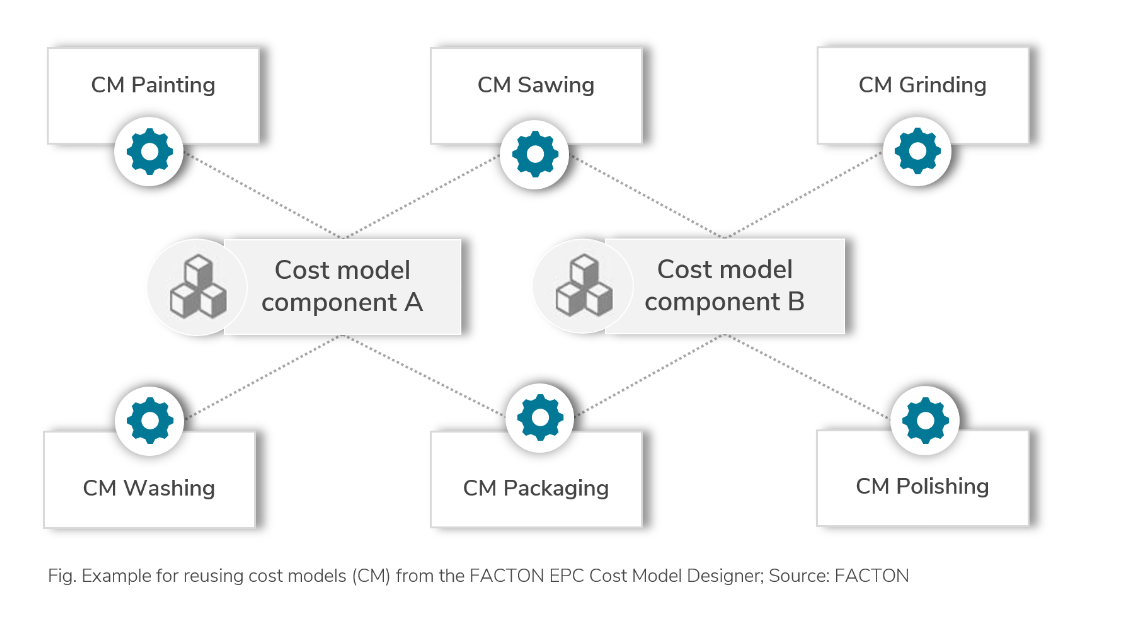Costing as a way to check manufacturability: Is there an IATF 16949 standard for cost accounting, too?
Cost engineers know the product lifecycle from product development to delivery of the product to the customer:
- The ordering party, i.e. customer specifies the product requirements.
- Engineering creates a product design based on these requirements.
- The cost engineer evaluates various design iterations. Multiple production alternatives are presented taking into account cost considerations.
- A committee chooses one of these alternatives and offers it to the customer.
- The customer requests changes that are made.
- The prices are set.
- The order is passed on to production.
- The product is delivered and the customer pays for it.
This roughly describes the everyday situation in many companies: Empirical values are considered, forecasts are made, plans are prepared...
However, at any point in the product lifecycle those involved in cost engineering may determine that the cost calculation is incomplete. What now? The cost calculation is expanded. Another work step is added or a different material is used.
The later in the product lifecycle a change to the product becomes necessary, the more critical its impact may be on costs.
After the price for a product has already been set, it may not be possible to make the case for a subsequent price adjustment. If a worst-case scenario like this occurs, fulfilling supply obligations can mean that the expected profit will not be earned or that the product may even be unprofitable.
Improving the quality of processes and products with IATF 16949
Every enterprise strives to achieve the highest possible customer satisfaction. On the one hand, the aim is to meet customer requirements 100% or even exceed these. On the other, the cost and the quality of the products must be right.
This is the reason companies in the automotive industry work with standards such as IATF 16949. Certification focuses on quality improvement as companies make a formal commitment to excellence, cost efficiency and reliability. These guidelines are published by the International Automotive Task Force. The standard combines all major intersections of automotive quality standards such as QS-9000 (USA), VDA 6.1 (Germany), EAQF 94 (France) and AVSQ (Italy).
Supplier certification according to IATF 16949 is now one of the “entrance requirements” to even be considered as a contractor.
By becoming certified, an enterprise proves that it has met the quality requirements and that it incorporates continuous improvements into the production sequences. The main focus is on preventing errors and on reducing fluctuations and inefficiency. [Source: TÜV Süd]
How can IATF 16949 certified companies ensure that quotation calculation corresponds to the production process?
The calculations upon which the quotation is based are also subject to high quality standards. There are no uniform costing standards. Each enterprise is responsible for the content of its own cost calculations. Standardized cost calculations must
- be repeatable,
- be prepared based on real, existing master data,
- show the maturity of the calculation – the estimate.
Increasing product variety often makes it necessary to prepare an ever increasing number of cost calculations for the customer.
Even with fewer and fewer human resources and little time available for preparing quotations, the quality of the calculation must not suffer.
Cost Model Designer supports a digital feasibility study
In order to calculate reliable quotes and to use existing resources effectively, companies are required to work with standards in their cost calculation process. Software-based cost models like those created in the Cost Model Designer offer a high degree of standardization. It consistently designs cost models for both the individual production steps and the components.
Existing cost models are created centrally in the Cost Model Designer and made available in the enterprise costing solution (Single Point of Truth Costing). These cost models can be utilized within the enterprise by many users and with great flexibility. For instance, existing cost models for production steps are consolidated into a model for components (e.g. assemblies) and used in the cost calculation. As a result, cost engineers are able to design cost models for both production processes and complete components. Each cost model for the individual production steps can be reused as often as desired in different cost models for components.
The Cost Model Designer helps enterprises standardize their costing to a greater degree. Errors and deficiencies in costing can be identified quicker with uniform guidelines, which improves the quotation process. Users are able to completely map complex manufacturing and assembly structures in the quotation calculation. Late changes in the product lifecycle can be mapped reliably in the cost calculation via the cost models.
Enterprises that use the Cost Model Designer also benefit from other advantages:
- Simplified costing. Buyers can create a complete cost calculation without setting up the BOM structure. The user does not need to know which production steps are used to make the products. The material just needs to be selected from the technical drawing. The BOM structure is generated via the applied cost model and the defined rules. The user simply enters the relevant data. The cost model completes the BOM.
- Quick and flexible use of the cost models. With the corresponding costing solution, the guidelines for costing can be applied enterprise-wide and without discontinuities in media. The cost models can also be used multiple times. This is useful for costing-based mapping of individual production processes or for designing cost models for complex assemblies.
- Agile calculation processes. The cost models enable the user to implement the customer requirements in a quotation calculation as soon as they are received according to agile methods in teams. The team follows the pattern: RFP sketch > Quotation design > Quotation calculation.
Enterprises can use software modules like the Cost Model Designer and the cost models derived from it to ensure that the cost models for the production of a component are designed in complete detail and the costs are calculated in accordance with IATF 16949.

HIGHEST QUALITY AT THE BEST PRICE
Find out in our webinar on demand how you can obtain transparency about the costs and cost structures of suppliers more quickly.





